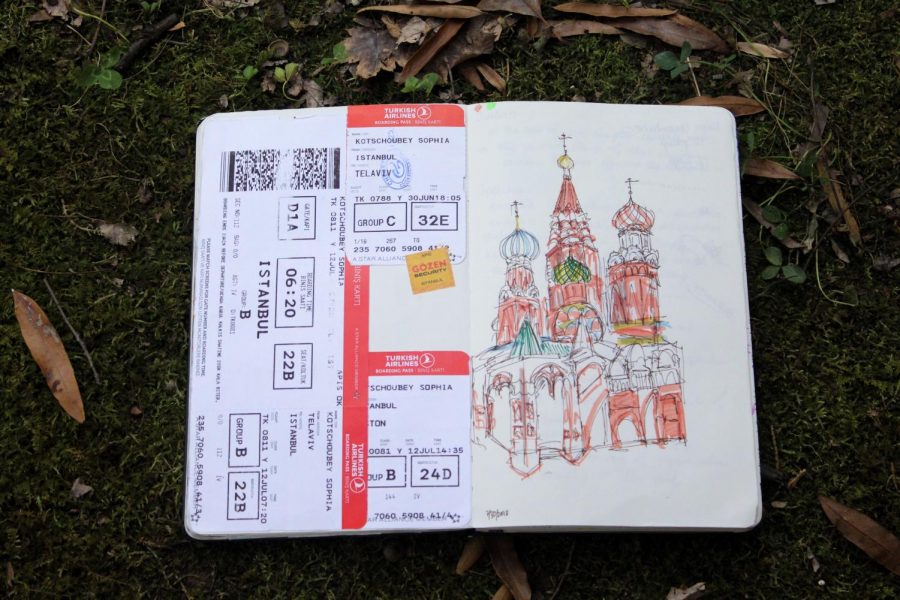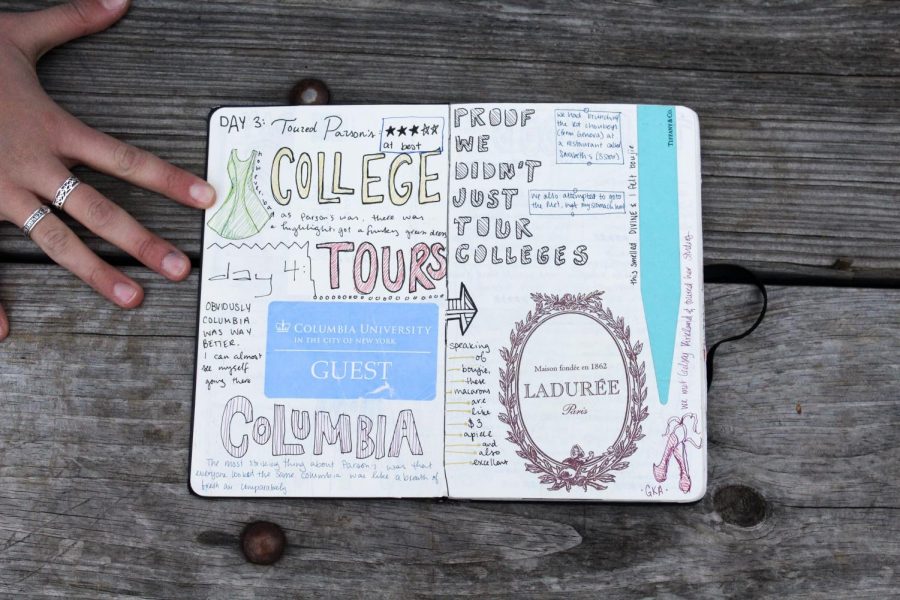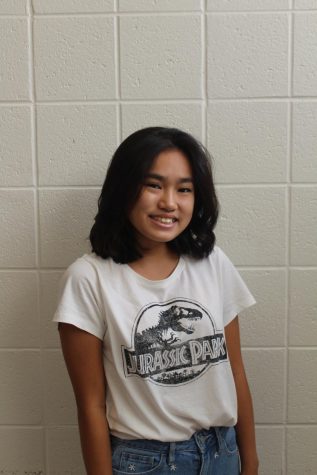Students use bullet journals for innovation, organization
Junior Sophia Kotschouby used train tickets and drawings to decorate her bullet journal. Many students have started using bullet journals as a way to organize their ideas.
January 14, 2019
Walking through the hot and vibrant streets of Istanbul this past summer, junior Sophia Kotschoubey held her small leather journal close at all times. She glued train tickets to the unlined pages, wrote descriptions of the Turkish couscous and meze platters she ate and sketched people she saw on the streets and the history-laden city’s colorful buildings. Instead of just simply snapping photos, Kotschoubey used the journal to remember her summer trip with writing and drawings.
Kotschoubey, along with thousands, have turned to bullet journaling—or free-form journaling—as a mindful and creative approach to organize plans and ideas. The most popular type of bullet journals are unlined Moleskine journals, which allow journalers to freely structure their thoughts. Journalers fill their Moleskins with hand-drawn monthly or weekly calendars, sketches, notes, reminders, daily updates and plans to keep themselves organized.
Whitman students’ interest in bullet journaling parallels a national trend. There was an 18 percent increase in unruled notebook sales this year and a 17 percent increase in colored markers, even though general office supply sales have been decreasing over the past several years, the National Purchase Diary Panel found. There are thousands of bullet journal Instagram posts and YouTube videos about bullet journaling. Some videos have reached over a million views.
Junior Eva Ginns uses her journal as an art form. She personalizes it with sketches and watercolor paintings, creating a new theme—ranging from galaxies to comic books—each month. She carries her 65-page journal everywhere, jotting down upcoming plans.
“With the bullet journal, there’s no drawn lines, and it gives me a way to completely be my own person in my own contained space,” Ginns said. “There’s personal discovery and benefits.”
Kotschoubey has bullet journaled for a year. Bullet journaling allows her to organize momentary ideas into a single space, she said. She has lists of potential songs she wants to play for talent show, small sketches of possible artwork, and even holiday gift ideas for her friends and family.
English teachers Matthew Bruneel and Todd Michaels use free-form journals to visually keep track of their chaotic schedules. Bruneel keeps his journals simple, writing with a plain black pen, and only uses lines to divide his calendars and checklists.
“A bullet journal has a very simple capacity and ability to think about the past and the future,” Bruneel said.“I’m not perfect, but it works for me when I need it. To start, you have to just buy it—mine was only an eight dollar journal—and don’t be afraid to just fill it out.”
Journaling relieves stress, AP psychology teacher Sheryl Freedman said; writing down thoughts and ideas gives people a dedicated time to worry and get perspective. Junior Anjeli Smith started journaling as a tool for managing stress, she said.
“You can choose to be consistent, or you could choose to write whenever you feel like it, like whenever something major happens,” Smith said. “There’s not a lot of pressure because nobody’s going to read it, and it’s nice to just have something for myself.”
Andie Arbo, a YouTuber who makes videos showcasing her different bullet journal themes and designs, gets over a hundred thousand views on some videos. She likes bullet journaling because it’s a way to keep track of life in a creative, and personalized way, she said in an interview.
Her journals are filled with intricate designs for her monthly themes. Her 2018 December retro and tropical theme, includes stickers of small vinyl records as a background and detailed drawings of tropical plants surrounding her weekly calendar.
“The best parts of bullet journaling are the things technology can’t accomplish: painting, gluing, working with your hands,” Arbo said. “Nothing can ever replace the feeling of pen on paper.”
See the below slideshow for more images of students’ journals. All artwork by juniors Sophia Kotschoubey and Eva Ginns. Photos by Natalie Lewis.












